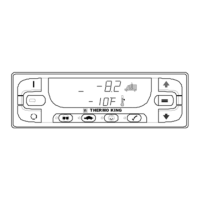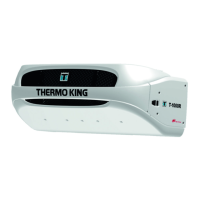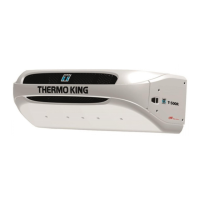54
CARE AND MAINTENANCE
LOADING
GENERAL INFORMATION
1. Inspect the cargo box for proper insulation.
2. Ensure all door seals are tight seal with no air
leakage.
3. Inspect the cargo box inside and out for
damaged or loose doors or skin.
4. On the inside, look for damaged walls, air
ducts, floor channels or “T” flooring,
clogged defrost drain tubes and clogged or
damaged floor channels which could block
the air return, creating “Hot Spots” in the
load.
5. Pre-cool the cargo box as required.
6. Ensure loads are at proper carrying
temperature when you pick them up. Note
any variance.
7. Supervise loading of the product to assure
sufficient air space around and through the
load so as not to restrict air flow.
INSPECTING THE LOAD
Always inspect load prior to departure.
1. Ensure unit is off before opening cargo box
doors. Otherwise refrigerated air is expelled
hot air drawn in. The unit may be run with
the doors open if the truck is properly backed
into a refrigerated warehouse.
2. Perform final external and internal load
temperature checks. Note any irregularities
on the manifest.
3. Ensure cargo is not blocking the evaporator
inlets and outlets and that ample circulation
space has been provided around the load.
4. Ensure truck doors are securely locked.
5. Ensure controller setpoint is at the desired
temperature.
6. If the unit was stopped, restart using the
starting procedures outlined in this manual.
7. Repeat the After Start Inspection.
8. Defrost the unit one half-hour after loading
by selecting the Manual Defrost. The Defrost
cycle terminates automatically.
9. Carry out an on the road inspection every
four hours of operation.
Note: The unit will not defrost unless the
evaporator coil temperature is below 6°C.
1. Unit inspection
2. Good outside air circulation
3. Seals equally compressed
4. Clear defrost drains
5. Tight doors
6. Good air circulation around load
7. Interior/exterior walls and
insulation in good condition
8. Cargo proper temperature prior
to loading

